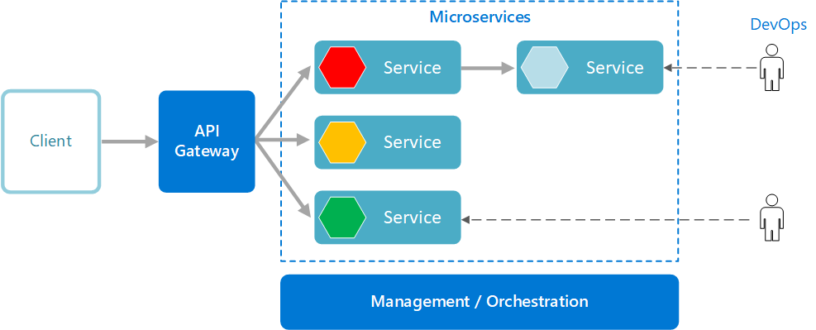Table of Contents
Introduction – Microservices 101
The idea of microservices has become very popular in the rapidly changing field of software development. Understanding the transition from conventional monolithic architectures to the more modular and scalable microservices can be difficult for students and aspiring software engineers. By drawing comparisons with traditional software development, this article seeks to demystify the world of microservices and provide pertinent examples to aid beginners in understanding the basics.
Traditional Software Development:
Software applications were traditionally created with a monolithic architecture. All of an application’s parts, including the user interface, business logic, and data access layer, are firmly combined into one cohesive unit in a monolith. Although this method has advantages, as applications get more complex, it may become cumbersome. Any updates or modifications to one area of the application frequently necessitate making changes to the entire codebase, which slows down development and raises the possibility of mistakes.
Microservices Architecture:
In contrast, microservices divide an application into smaller, independent services, adopting a different methodology. Through clearly defined APIs, each service can interact with other services and is intended to carry out a particular task. This structure is modular, which facilitates scalability and flexibility by making it easier to develop, test, and deploy individual services.
Comparison:
- Scalability:
- Traditional: Scaling a monolithic application typically involves duplicating the entire application, even if only one part requires more resources.
- Microservices: Each service can be scaled independently, enabling efficient resource allocation based on specific needs.
- Development Speed:
- Traditional: Changes or updates often require modifications to the entire codebase, slowing down development.
- Microservices: Independent services can be developed, tested, and deployed separately, speeding up the development cycle.
- Fault Isolation:
- Traditional: A failure in one part of the application can affect the entire system.
- Microservices: Failures are isolated to specific services, preventing a single point of failure from bringing down the entire application.
- Technology Stack:
- Traditional: Homogeneous technology stack throughout the application.
- Microservices: Each service can have its own technology stack, allowing for flexibility in choosing the right tools for the job.
- Deployment and Continuous Integration:
- Traditional: Deploying changes to a monolithic application can be challenging as the entire application needs to be redeployed. Continuous Integration (CI) may be slower due to the need for comprehensive testing.
- Microservices: Each service can be deployed independently, allowing for faster and more frequent releases. Continuous Integration and Continuous Deployment (CI/CD) pipelines can be optimized for individual services, facilitating agile development practices.
A few illustrations to clarify the distinctions between the traditional and microservices development approaches.
Example 1: Social Media Platform
Traditional: In a monolithic social media application, features like user profiles, the news feed, and messaging would be tightly integrated. If the messaging functionality needs an upgrade, developers might have to make changes to the entire codebase, affecting user profiles and the news feed.
Microservices: In a microservices architecture, each feature (user profiles, news feed, messaging) would be a separate service. If developers need to enhance the messaging service, they can do so independently, without impacting other parts of the application. This modularity allows for quicker feature development and deployment.
Example 2: Travel Booking System
Traditional: In a monolithic travel booking system, components like flight booking, hotel reservations, and payment processing are intertwined. Upgrading the hotel reservation system might necessitate changes to the entire application, including the flight booking logic.
Microservices: In a microservices setup, each booking component (flights, hotels, payments) would operate as a distinct service. If developers need to enhance the hotel reservation service, they can do it in isolation, ensuring that changes to one service don’t disrupt the functionality of others. This granular approach facilitates agility in adapting to changes in specific areas of the application.
Conclusion – Microservices 101
In conclusion, microservices provide real benefits in a range of software development contexts due to their modular and autonomous design. Microservices architecture is useful for various applications such as travel booking systems, social media platforms, and more. It can improve scalability, reduce development bottlenecks, facilitate more efficient and flexible software development, and enable faster and more frequent deployments through optimized CI/CD practices. The transformative power of microservices should be recognized by aspiring software engineers and students entering the field as they navigate the dynamic landscape of contemporary software development.
Happy Coding !!




Leave a Reply